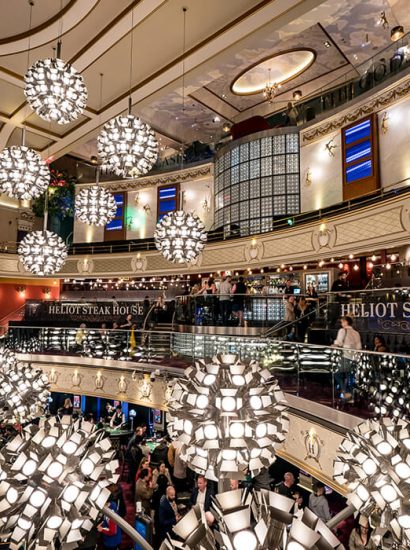The Netherlands has long been a fertile ground for extraordinary artistic talent. Over the centuries, Dutch artists have shaped the art world in unimaginable ways, from the timeless mastery of the Dutch Golden Age to the bold and dynamic movements of modern art. The legacy of Dutch artists is not only remarkable for their technical proficiency but also for their deep explorations of light, realism, emotion, and symbolism. In this article, we will explore ten must-see masterpieces from Dutch artists that you absolutely cannot miss. Whether you are an art connoisseur or a curious traveler, these iconic works will offer you a glimpse into the incredible artistic heritage of the Netherlands.
Dutch Artists and the Masterpiece of Rembrandt’s The Night Watch
One of the most celebrated works of Dutch artists, The Night Watch by Rembrandt van Rijn, is an extraordinary portrayal of a militia company. Painted in 1642 during the Dutch Golden Age, this massive canvas captivates viewers with its use of light and shadow, known as chiaroscuro, a technique that Rembrandt mastered. The Night Watch is renowned for its dynamic composition and the way Rembrandt broke traditional group portrait rules by showing his subjects in action rather than posing stiffly. This piece is housed at the Rijksmuseum in Amsterdam and is a cornerstone of Dutch art, embodying the spirit of 17th-century Amsterdam and the brilliance of Dutch artists.
Dutch Artists and the Tranquility of Vermeer’s Girl with a Pearl Earring
Among Dutch artists, Johannes Vermeer is known for his quiet yet profound works, and none is more iconic than Girl with a Pearl Earring. Sometimes referred to as the “Mona Lisa of the North,” this painting is an exquisite example of Vermeer’s mastery of light and texture. The girl’s enigmatic expression and the luminous pearl in her ear have captivated art lovers for centuries. Unlike many grand historical works, Vermeer’s painting is intimate, focusing on a single subject with incredible detail and emotion. This masterpiece, like other works by Dutch artists, reveals the Dutch fascination with domestic scenes and the subtleties of human emotion.
The Revolutionary The Starry Night by Van Gogh
No discussion of Dutch art would be complete without Vincent van Gogh, one of the most influential figures in art history. The Starry Night, painted in 1889, is perhaps Van Gogh’s most famous work, characterized by swirling skies, bold colors, and emotional intensity. Although Van Gogh spent much of his artistic life in France, his Dutch roots are evident in his attention to the natural world and use of vibrant color. This painting, now housed at the Museum of Modern Art in New York, stands as a testament to the groundbreaking vision of Dutch artists who dared to push the boundaries of expression and technique.
Mondrian’s Modern Marvel Composition with Red, Blue, and Yellow
Piet Mondrian is another of the most renowned Dutch modernists, particularly in the realm of abstraction. His Composition with Red, Blue, and Yellow represents a major shift in the art world towards geometric abstraction. Created in 1930, this painting is a clear example of Mondrian’s commitment to simplicity and order, using primary colors and shapes to convey his vision. Mondrian’s influence on the De Stijl movement and modern art as a whole cannot be understated, and this work epitomizes the innovation that artists from the Netherlands have continually brought to the international art scene.
Frans Hals’ The Laughing Cavalier
Frans Hals is among the most admired painters of the Golden Age, known for his lively and expressive portraits. The Laughing Cavalier, painted in 1624, is one of his most famous works, showcasing his ability to capture personality and movement. The cavalier’s confident expression and luxurious attire are depicted with such vitality that it feels as though the subject might step out of the painting. Hals’ dynamic brushwork and the lively character of his portraits demonstrate the skill and inventiveness that have made Dutch art celebrated across the world.
Bosch’s Imaginative The Garden of Earthly Delights
Hieronymus Bosch created one of the most unusual and imaginative works in the history of art with The Garden of Earthly Delights. This triptych, painted around 1500, is an intricate and fantastical depiction of paradise, earthly pleasures, and hell. Bosch’s surreal imagination and intricate detail make this painting a masterpiece that has intrigued viewers for centuries. Although much of his life remains a mystery, Bosch’s legacy lies in his ability to combine religious symbolism with surreal imagery, influencing generations of artists long after his time.
Escher’s Illusions in Relativity
M.C. Escher stands apart for his unique ability to blend art and mathematics. His famous lithograph Relativity (1953) plays with perspective and gravity in mind-bending ways, depicting a world where the usual rules of physics do not apply. Escher’s meticulous attention to detail and his ability to create optical illusions have made him a favorite among both art lovers and mathematicians. His work reflects the continued innovation of Dutch art, which has always sought new ways to challenge perceptions and break conventional boundaries.
Van Eyck’s The Arnolfini Portrait
Though technically born in what is now Belgium, Jan van Eyck was part of the broader tradition of the Northern Renaissance. His Arnolfini Portrait, painted in 1434, is a stunning example of early oil painting technique and incredible attention to detail. This portrait of a wealthy couple is filled with symbolism, from the reflection in the mirror to the placement of various objects. Van Eyck’s ability to capture texture and light was groundbreaking for his time and continues to influence artists to this day. This piece exemplifies the technical mastery for which Dutch art has long been celebrated.
The Dramatic View of Delft by Vermeer
Another masterpiece by Johannes Vermeer, View of Delft, showcases his exceptional talent for capturing light and atmosphere. Painted around 1660-1661, this landscape portrays Vermeer’s hometown of Delft with remarkable clarity and depth. Unlike his more intimate interiors, this work focuses on a panoramic view of the city, demonstrating the range and versatility of Vermeer’s artistry. The play of light on the buildings and water, as well as the precision in the architectural details, make this painting a masterpiece that perfectly encapsulates the beauty of the Dutch landscape.
Rembrandt’s Profound The Jewish Bride
We close our journey with another work by Rembrandt, The Jewish Bride. Painted in the late 1660s, this portrait of a couple, possibly representing the biblical figures Isaac and Rebecca, is a powerful example of Rembrandt’s mastery of human emotion and texture. The tenderness between the figures, rendered through soft brushstrokes and rich color, has made this painting one of the most beloved works in the Rijksmuseum. Rembrandt’s ability to convey deep emotion and intimacy in his portraits is a hallmark of Dutch art, whose works continue to resonate with viewers around the world.
Conclusion
The legacy of Dutch art has left an indelible mark on the world of painting, from the meticulous realism of the Dutch Golden Age to the daring abstraction of modernism. These ten masterpieces reflect the incredible range, talent, and innovation that Dutch artists have contributed to the global artistic landscape. Whether you are exploring their work in museums or encountering their influence in contemporary culture, the legacy of Dutch art is one that continues to inspire and captivate. These must-see works stand as testaments to the artistic genius of their creators and invite us to see the world through their visionary eyes.
FAQs
Q1. What makes the art from the Netherlands so distinctive?
Art from the Netherlands is known for its deep exploration of light, shadow, and realism, along with an emphasis on capturing both intimate domestic scenes and grand historical narratives. Dutch painters often pioneered new techniques and brought an unmatched sense of detail to their work.
Q2. Which museums should I visit to see these famous masterpieces?
To view these iconic works, museums such as the Rijksmuseum in Amsterdam, the Mauritshuis in The Hague, and the Van Gogh Museum in Amsterdam are essential stops. Each houses some of the most renowned works in European art history.
Q3. How did the Golden Age of painting in the Netherlands impact the art world?
The Golden Age saw unprecedented advancements in realism, portraiture, and landscape painting. Artists of the period mastered light and composition, influencing future art movements across Europe and setting new standards for excellence.
Q4. What role did religion and symbolism play in the art of the Netherlands?
Religion and symbolism were prominent themes, especially in earlier works, often conveying moral and spiritual messages. Even in seemingly simple domestic scenes, symbolic elements were included to provide deeper meanings.
Q5. What themes are common in the works of Dutch artists?
Common themes in the works of Dutch artists include domestic scenes, landscapes, portraits, and religious symbolism, often executed with remarkable attention to detail and emotion.
Also read: Holland vs Germany: 10 Memorable Moments in Football History








